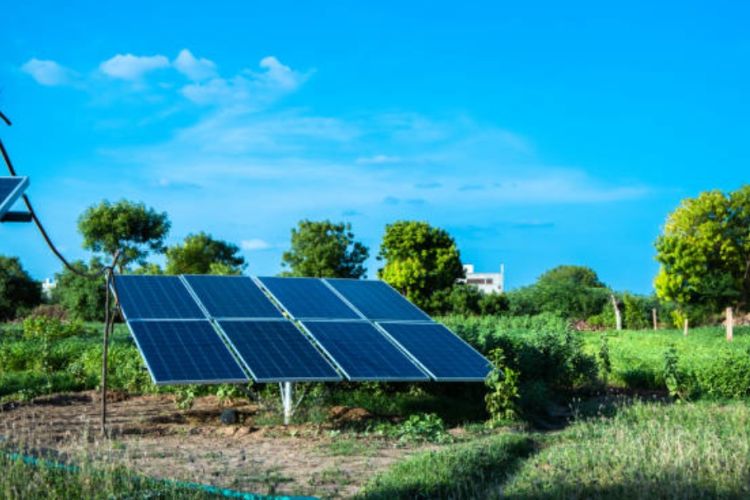
The rural economy is central to India’s growth story, with farmers forming the backbone of its socio-economic structure. To sustain and enhance rural livelihoods, the government periodically updates existing welfare programmes and introduces new ones. Among these, the Pradhan Mantri Kisan Urja Suraksha evam Utthaan Mahabhiyan (PM-KUSUM) stands out as an ambitious attempt to integrate renewable energy into agriculture. Now, as the scheme enters its second phase, the aim is to give a fresh push to farmer welfare while advancing India’s clean energy transition.
Launched in 2019 with a target year of 2023, PM-KUSUM’s deadline was extended to March 2026. The Ministry of New and Renewable Energy (MNRE) is now preparing for Phase 2, to be rolled out in the next financial year. This phase—brought under the Agriculture Infrastructure Fund (AIF) in August 2024—seeks to deepen the impact of the original programme by expanding solar-powered irrigation and improving energy security for farmers.
READ | PMFBY: Crop insurance scheme faces coverage crisis
From PM-KUSUM to PM-KUSUM 2.0
The target is ambitious: 34,800 MW of solar capacity by March 2026, supported by a central financial allocation of ₹34,422 crore. The scheme retains its three-pronged structure:
Decentralised solar plants – 10,000 MW of ground- or stilt-mounted grid-connected units on farmers’ land.
Standalone solar pumps – 14 lakh installations in off-grid areas.
Solarisation of grid-connected pumps – 35 lakh units, including feeder-level solarisation.
Recent policy updates broaden the scheme’s reach. Solar pump solarisation now falls under AIF and Priority Sector Lending (PSL) norms, easing access to credit. State-level tendering is expected to streamline procurement, and linking with MGNREGA could create rural jobs through micro-irrigation projects.
Economic and environmental payoffs
Replacing diesel pumps with solar-powered systems offers multiple benefits: reliable daytime power for irrigation, reduced operating costs, and an additional revenue stream from selling surplus power to the grid for up to 25 years. Barren or uncultivated land can be monetised in this way. The scheme also targets an annual cut of 32 million tonnes in CO₂ emissions, aligning with India’s climate commitments.
Government data show encouraging uptake: as of June 2025, over 4.11 lakh farmers had benefited, with FY25 seeing a record 4.4 lakh pump installations and 2.6 lakh solarisations. The Union Budget 2025–26 allocation of ₹2,600 crore should help sustain momentum.
States like Gujarat have demonstrated the programme’s potential. With 30% central financial assistance and matching state subsidies, thousands of farmers have adopted solar pumps, cutting irrigation costs, improving yields, and enhancing water efficiency when combined with micro-irrigation systems.
Design features that aid adoption
The decentralised nature of PM-KUSUM empowers farmers to control their own energy generation. Stilt-mounted solar plants ensure that cultivable land remains productive. In Gujarat, farmers with as little as 0.2 acres in forest areas qualify for benefits, widening the scheme’s base.
However, adoption patterns vary. Rajasthan and Gujarat—blessed with high solar radiation—have seen rapid uptake, while states with prolonged monsoons or lower sunlight lag behind. The demand-driven model offers flexibility but has resulted in uneven progress, with bureaucratic delays and low awareness in some states slowing implementation.
Challenges to scaling up
For PM-KUSUM 2.0 to deliver on its promise, several bottlenecks must be addressed:
High upfront costs – Even with subsidies, farmers must bear 40–70% of the cost, a hurdle compounded by banks’ reluctance to finance such projects.
Supply chain constraints – While pumps are available, specialised solar components face shortages, delaying installations.
Land and grid issues – Large-scale solar plants face land acquisition hurdles, and weak rural grid infrastructure limits surplus power integration.
Policy gaps on water use – Without groundwater regulation, solar-powered pumps could accelerate aquifer depletion in water-scarce areas.
Learnings from Phase 1 point to possible solutions. Raising the cap on central assistance from 7.5 horsepower to 10 could improve adoption. Maharashtra’s experience—aggregating 40,000 acres via a state portal without central support—offers a replicable model for other states.
PM-KUSUM 2.0 has the potential to be a game-changer for rural India, combining renewable energy adoption with agricultural resilience. But this promise will be realised only if the government closes financing gaps, strengthens supply chains, upgrades rural grid capacity, and integrates water-use safeguards.
By addressing these gaps through targeted interventions, the scheme can become more than a subsidy programme—it can be a pillar of energy security, economic upliftment, and environmental sustainability for India’s farmers.
